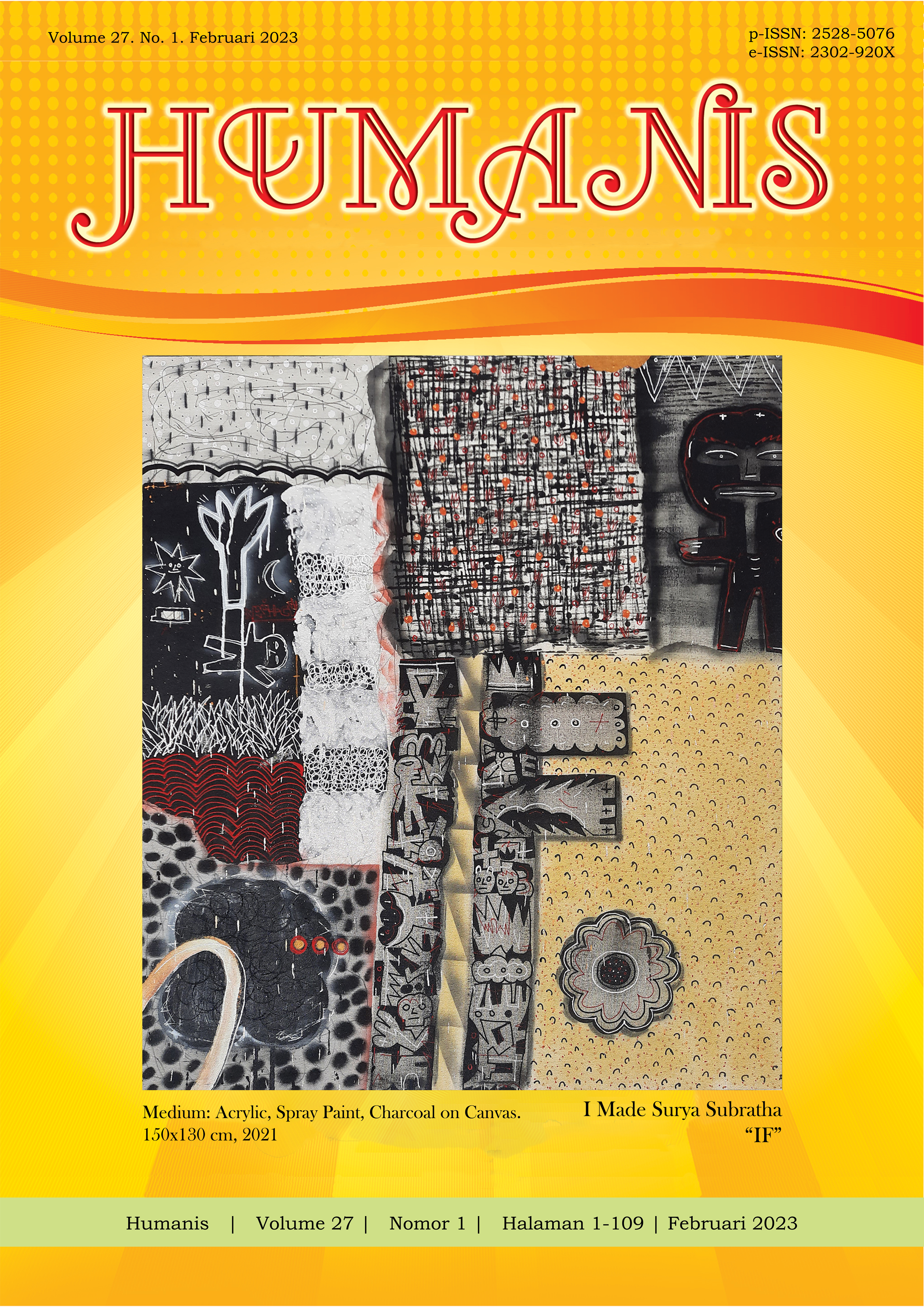Types of Politeness Maxim and its Scale Found in Emma 2020 Movie
Abstract
Politeness is the primary notion in this study. The objective was to find the types of politeness maxim and its scale applied by the character in Emma 2020 movie. The analysis was conducted based on the theories proposed by Leech (1983) who formulated the six types of politeness maxim. Leech (1983:123) also proposed the three scales of politeness and two scales based on the theory by Brown and Gilman (1960). The data were taken from the British romance movie entitled Emma 2020. The qualitative method was used for analyzing the data. The analysis found six types of politeness maxim and five types of politeness scale applied by the movie characters with the types of 13 approbation maxim and 24 cost-benefit scales was extremely appear. In addition, there are two types of politeness maxim compete by the same character found in this analysis, and the goals of conversation affected the politeness maxim application.
Downloads
References
Creswell, J. W., & Poth, C. N. (2018). Qualitative inquiry & research design; Choosing among five approach. In SAGE Publications, Inc.
Cruse, D. A. (2000). Meaning in Language: An Introduction to Semantic and Pragmatic. New York: Oxford University Press.
Damayanti, M. (2021). Politeness And Scale Of Maxim Found In “Inside Out” Movie Directed By Pete Docter Institutional Repository, 1–10.
Fitch, K. L., & Sanders, R. E. (2005). Introduction: LSI as Subject Matter and as Multidisciplinary Confederation. In Language and Social Interaction (p. 6). New Jersey: Lawrence Erlbaum Associates.
Fukushima, S. (2003). Request and Culture: Politeness in British English and Japanese (3rd ed.). Germany: Peter Lang Publisher.
Handayani, I. G. A. M. (2014). Great Gatsby English Department Faculty Of Letters And Culture. Humanis, 9(Volume 9. No. 2. November 2014), 1–7. https://ojs.unud.ac.id/index.php/index/search/search
Harmer, J. (2001). Speaking. In The Practice of English Language and Teaching (3rd ed., pp. 269–271). London: Longman Group Ltd.
Leech, G. (1983). Principle of Pragmatic. New York: Longman Inc.
Leech, G. (2014). The Pragmatic of Politeness. New York: Oxford University Press.
Maharani, S. A. I. (2017). Politeness Maxim of Main Character in Secret Forgiven. Jurnal Bahasa Lingua Scientia, 9(1), 1–14. https://doi.org/10.21274/ls.2017.9.1.1-14
Oatey, H. S. (2008). Culturally Speaking: Culture, Communication and Politeness Theory (2nd ed.). London: Continuum Publishing Group.
Pardede, H., & Pratiwi, H. W. (2019). An Analysis of Politeness Principle Maxims Found in Big Hero 6 Movie Hilman. European Exploratory Scientific Journal According, 3(VOL 3 №4 2019), 1–7. https://syniutajournals.com/
Pramiwidari, N. W. (2018). Politeness Maxim in the Motive the Forest. Humanis, 22(Vol. 22 No. 1 (2018)), 6. https://ojs.unud.ac.id/index.php/sastra/search/search
Sebeok, T. A. (1960). Style in Language. New York: Massachusetts Institute of Technology.
Silverman, D. (2004). David Silverman (Ed.) - Qualitative Research_ Theory, Method and Practice-Sage Publications Ltd (2004).pdf.
Thomas, J. (1995). Meaning in Interaction: An Introduction to Pragmatic. New York: Routledge Publishing.
Watts, R. J. (2003). Key topics in Sociolinguistic: Politeness. Cambridge: Cambridge University Press.
Widyaningsih, M., & Hastuti, E. (2018). Maxims of Politeness on Alice in Wonderland Movie (Pragmatic Analysis). Journal of Language and Literature, 6(2), 64–71. https://doi.org/10.35760/jll.2018.v6i2.2484
Yule, G. (1996). Pragmatic. New York: Oxford University Press.


















